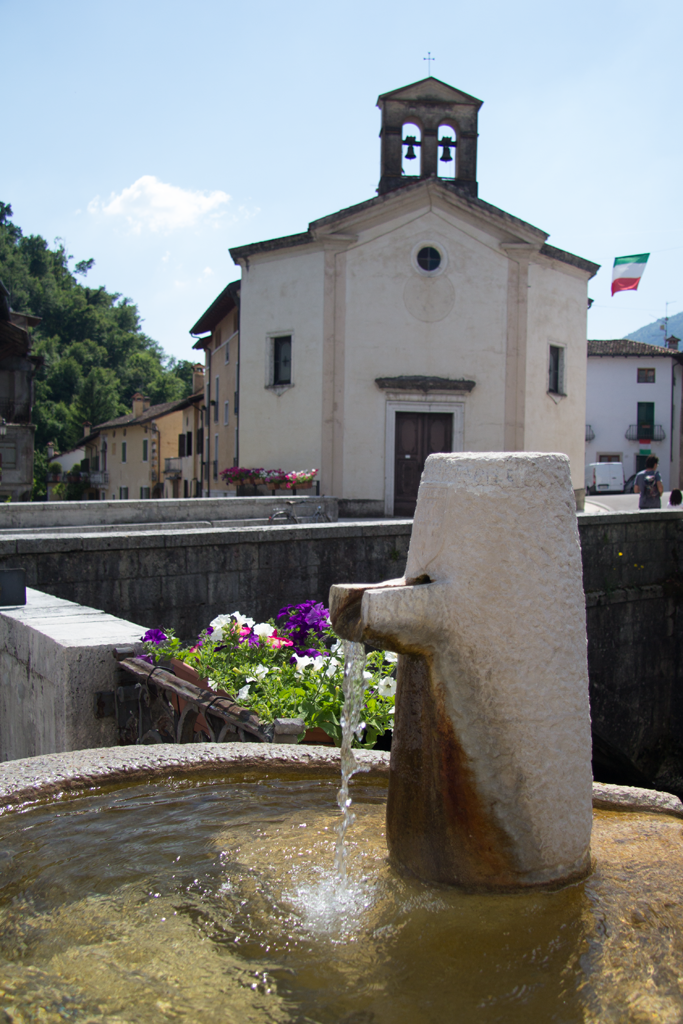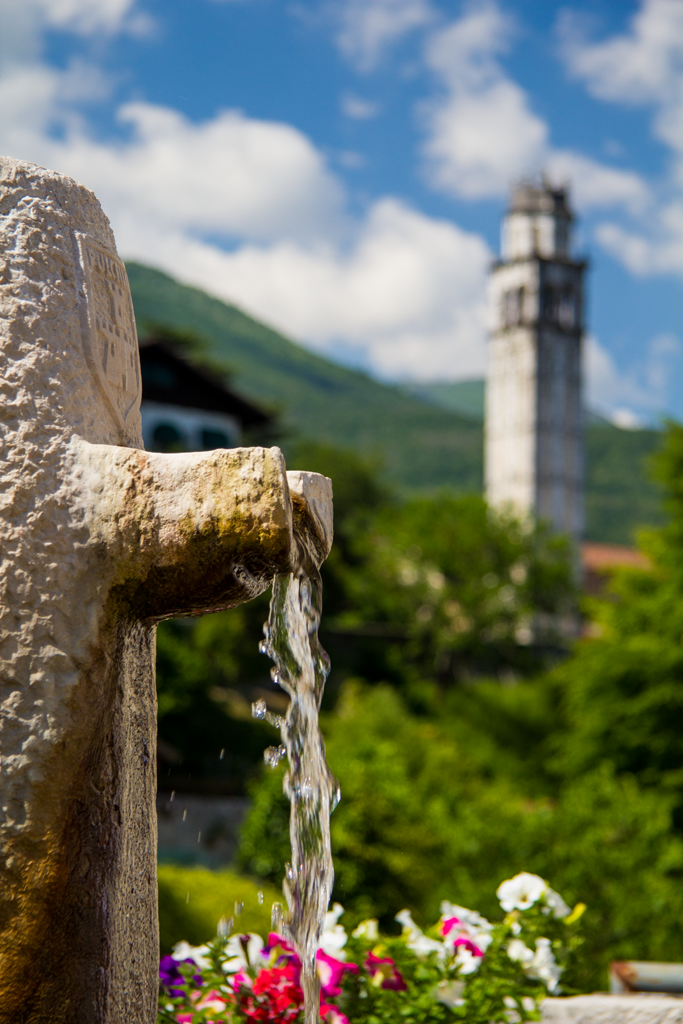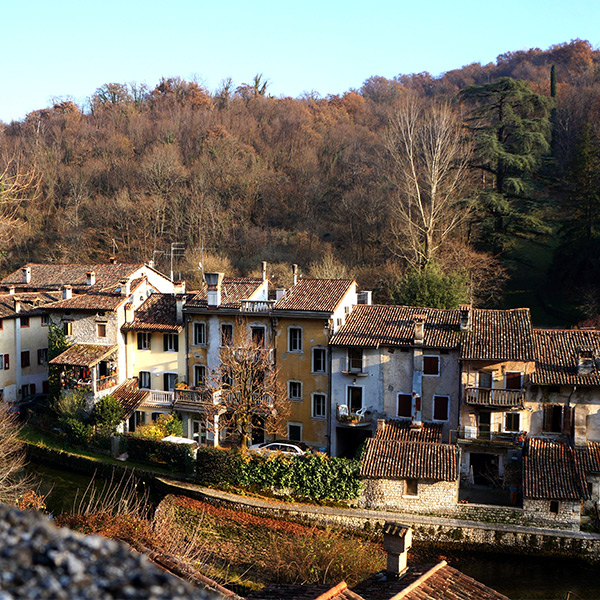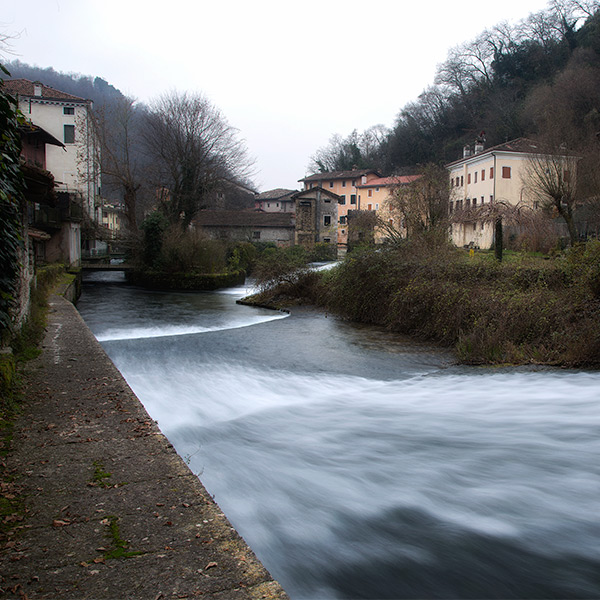The historical centre
A decree issued by the Signori di Polcenigo in 1200, encouraged the building of new houses within the town walls in order to attract new residents in the village. Over time a small village developed at the foot of the castle. Traders, artisans, notaries, tailors, barbers, furriers and smiths settled in the village while local activities, such as farming and stock rearing flourished together with tavern inns, bakeries, groceries and markets.
Other small settlements grew around the original centre: Slas, Coltura, San Rocco and the village called the Middle one, on the road leading to San Giovanni.
Polcenigo turned into a little town whose location was seen as a great asset. As early as the XIII century, on the hill that hosts the castle, a Franciscan convent was built, next to a pre-existing church dedicated to St. James. The convent, first reported in 1262, soon became a major social, economic, and religious centre.
In the XIV and the XV century two religious buildings were erected in Polcenigo: Our Lady of Health’s (1371) and St Rocco’s. The former, which was originally regarded as the Parish Church, underwent massive restructuring in the XVI century when it was enlarged and reoriented: the high altar was removed from the east to the west. The latter was built on the outskirts of the village, where it stood, as a heavenly sentry, to prevent the plague and other infectious diseases from entering the village. Its squat belfry is probably an ancient tower belonging to the defence walls.
A precise division of the territory emphasised the gap between the rich and the poor. The Nobility lived in the castle or in the luxurious palaces located in Via Coltura and Via Roma. The middle class, together with notaries and shopkeepers, lived in the town centre, whereas farmers and artisans lived in humble houses in the suburbs. In the XVII century a few wealthy families, like the Manins and the Fullinis, settled in Polcenigo where they purchased buildings, land and nobility titles.
The maintenance of the great urban heritage belonging to the counts and to the aristocracy was granted by the labour of the humble people that had to work for free. That was not enough to prevent the decay of the old castle. In the early 18th century the whole structure was in such poor conditions that the counts commissioned the Venetian architect Matteo Lucchesi to design a new comfortable villa (1738), a stately mansion in Venetian style that became their new residence on the hill for about one hundred years.


















